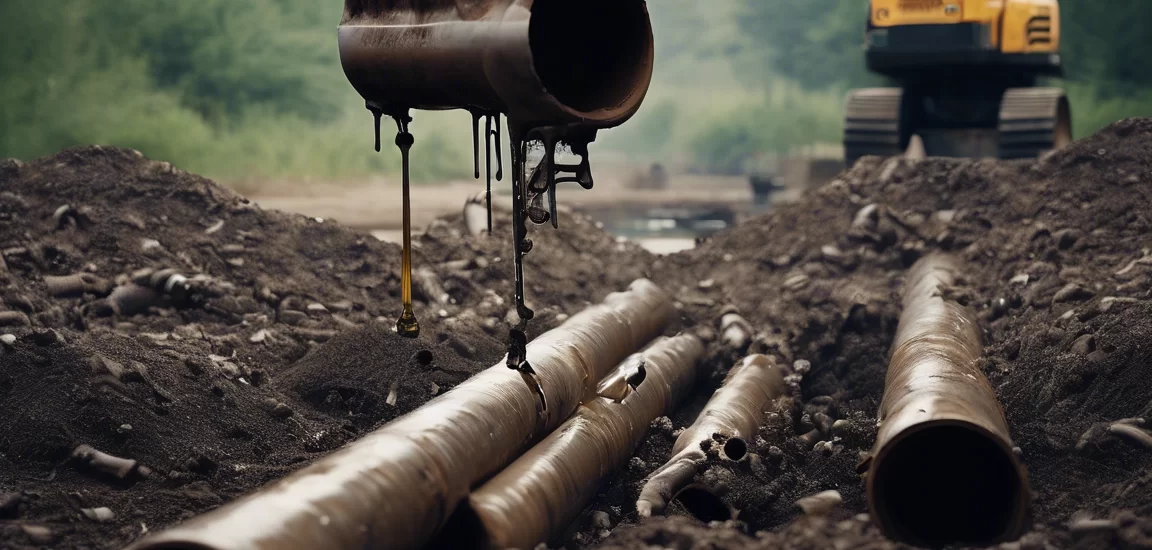Using used, oil-covered drill stems as driven pipe piles can offer environmental benefits through recycling and waste reduction, but it also introduces several potential risks that need careful management. Here’s a detailed technical comparison:
1. Resource Efficiency and Recycling Benefits
- The proposed benefits:
Repurposing used drill stems could minimize waste by diverting industrial byproducts from landfills. Instead of scrapping these components, they are given a second life in construction, contributing to a circular economy and reducing the demand for newly manufactured steel pipe piles. - Energy and Emissions Savings:
The production of new steel components is energy-intensive and generates considerable greenhouse gas emissions. By reusing existing drill stems, the industry could lower the overall energy consumption and environmental footprint associated with material production.
2. Contamination and Residual Oil Concerns
- Residual Oil Risks:
The presence of crude oil on these drill stems poses a significant environmental hazard. Residual hydrocarbons can leach into surrounding soil and groundwater over time, potentially contaminating local ecosystems. This leaching can be exacerbated by weathering, mechanical wear during installation, or changes in environmental conditions. - Toxicity and Chemical Composition:
Depending on the type of oil used during drilling operations, contaminants may include not only hydrocarbons but also heavy metals and other additives related to the drilling process. These substances can be harmful to both the environment and human health if not properly managed. - Toxic Materials used for drilling include:
- Diesel or Mineral Oil (Base Fluids in Oil-Based Systems)
- Biocides (e.g., Glutaraldehyde, Isothiazolinones)
- Designed to inhibit microbial growth but toxic to aquatic organisms and can disrupt ecosystems.
- Corrosion Inhibitors (Amine Derivatives)
- Can be toxic to aquatic life and may have bioaccumulative effects.
- Emulsifiers and Surfactants (Used in Oil-Based Fluids)
- Certain formulations may be toxic, impacting water quality and aquatic organisms.
- Heavy Metal Contaminants (Occasionally Present)
- Decontamination Challenges:
Before using these drill stems in construction, thorough cleaning or stabilization is essential. The decontamination process must be carefully controlled; if not executed properly, it could lead to secondary pollution (e.g., contaminated wastewater or air emissions during cleaning operations).
3. Structural and Longevity Considerations
- Corrosion and Durability:
If residual oil remains, it can interfere with protective coatings or promote corrosion over time. Corrosion not only compromises the structural integrity of the driven pipe piles but can also result in the release of metal ions and contaminants into the surrounding environment. - Lifecycle Analysis:
A comprehensive lifecycle assessment (LCA) is vital. This analysis should weigh the environmental savings from recycling against the potential long-term risks of contamination and structural degradation. Factors such as local soil conditions, groundwater vulnerability, and the extent of decontamination will influence the overall sustainability of this approach. - Wear or worn through pipe shaft:
- Commonly known material loss occurs while drilling and pumping corrosive abrasive filled fluids through the drill stem pipe shaft, wearing the steel wall material leaving unknown and varying wall thickness. Premature failure of the pipe pile is likely as the longevity of the pipe shaft is unknown.
4. Regulatory and Compliance Implications
- Environmental Regulations:
Repurposing materials that contain contaminants is subject to strict regulatory oversight. Compliance with environmental protection standards is mandatory, which might include additional testing, certification, or remediation measures. - Monitoring and Reporting:
Post-installation monitoring is critical to ensure that any potential leakage or contamination is detected early. Long-term environmental monitoring programs can help mitigate risks by providing data for corrective action if needed.
Conclusion
While reusing oil-covered drill stems as driven pipe piles offers clear advantages in terms of recycling and reducing the need for new material production, it also carries sifnificant environmental risks related to contamination and structural integrity. The key to a sustainable approach lies in:
- Proper Decontamination: Ensuring that any residual oil and associated contaminants are removed or stabilized before reuse.
- Rigorous Testing and Monitoring: Implementing robust testing protocols and long-term environmental monitoring to detect and address any contamination.
- Lifecycle Assessment: Conducting detailed LCAs to ensure that the environmental benefits of material reuse outweigh the potential risks.
- Pipe Shaft Inspection: Prior to reusing recycled drill stem pipes, the pipe shaft must be inspected for damage and thinning do to use ie: wear and tear.
In summary, when managed correctly with appropriate decontamination, regulatory compliance, and monitoring, the reuse of oil-covered drill stems can be a sustainable option. However, failure to address the contamination risks can negate the environmental benefits and lead to significant ecological and public health concerns.


